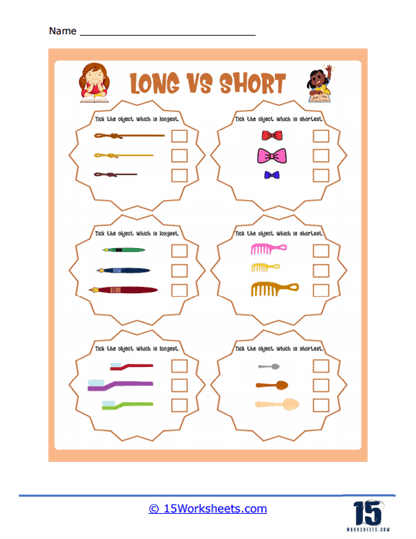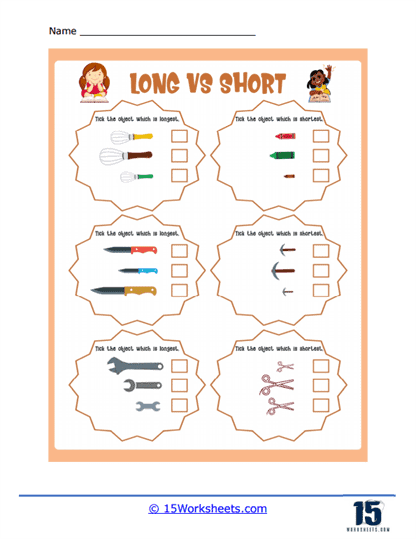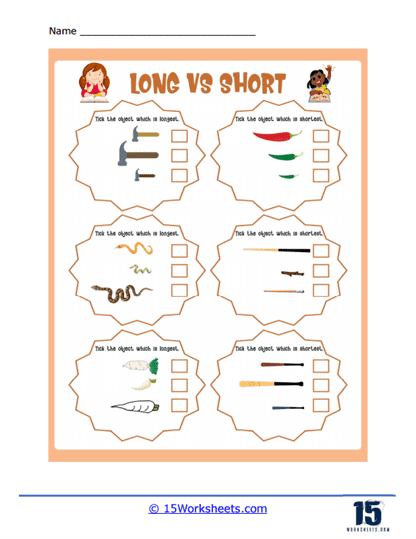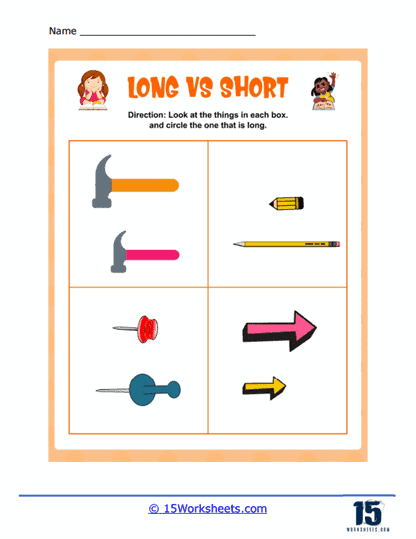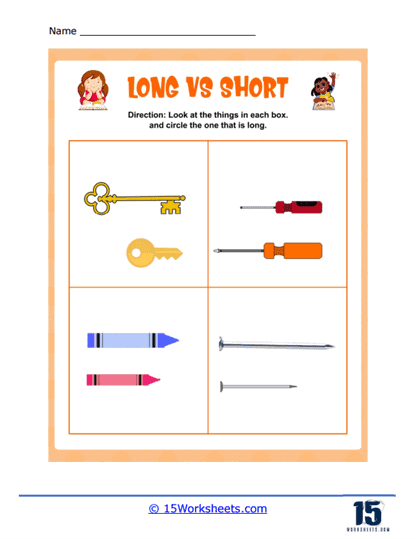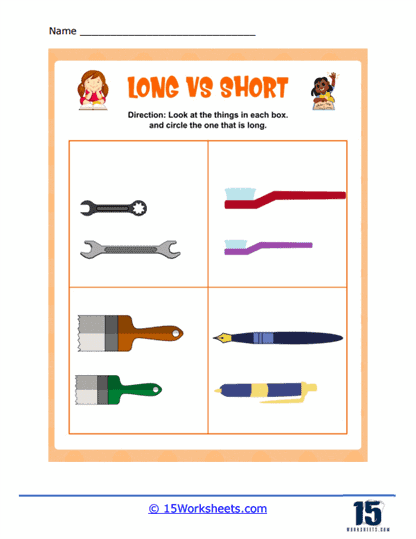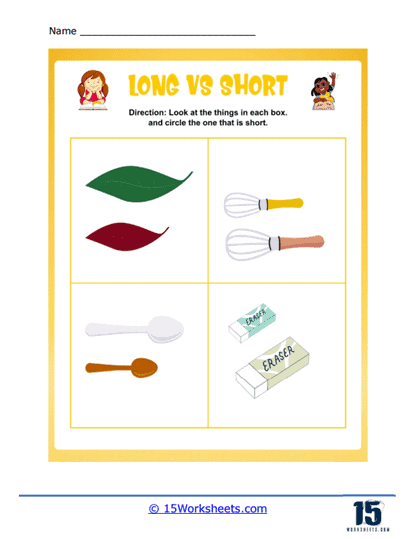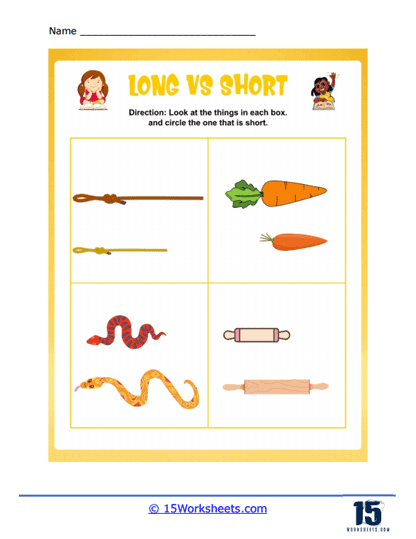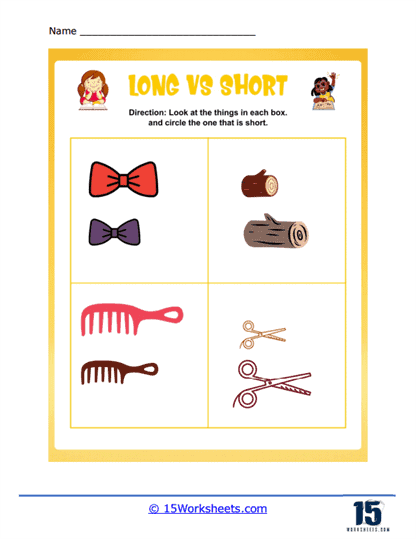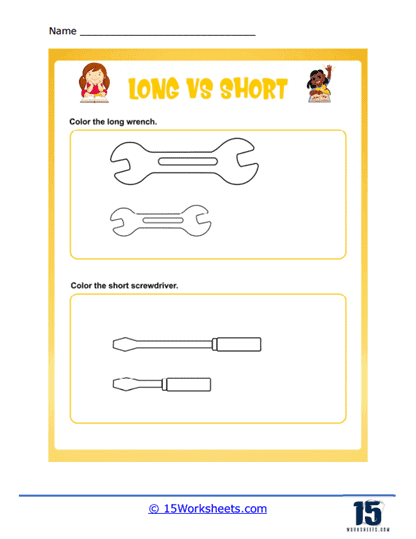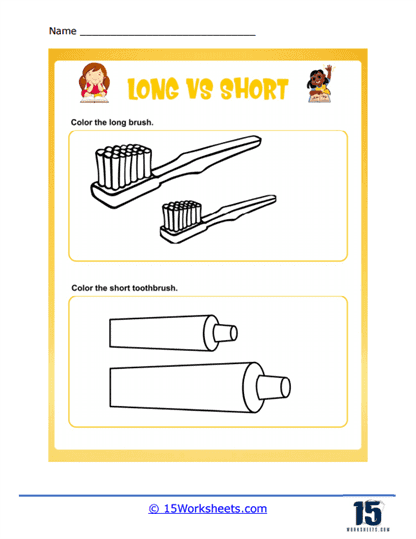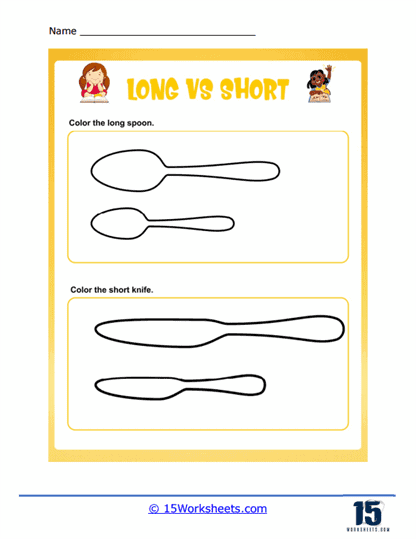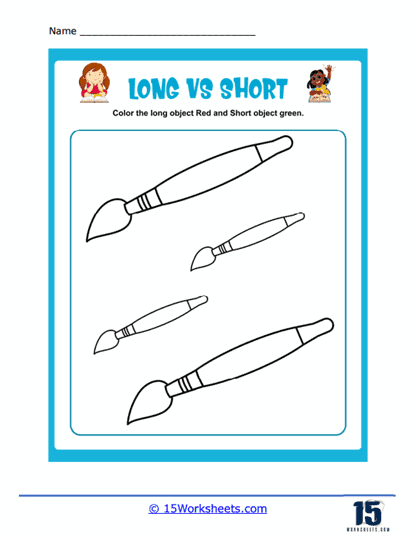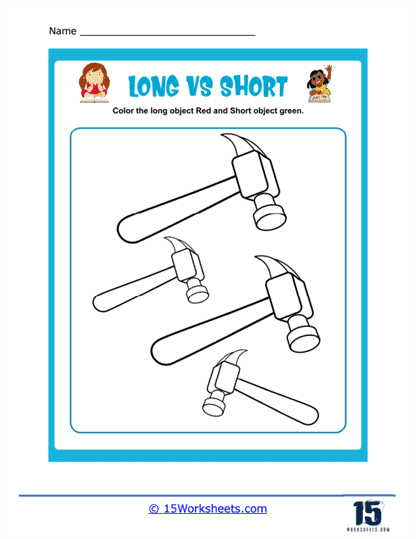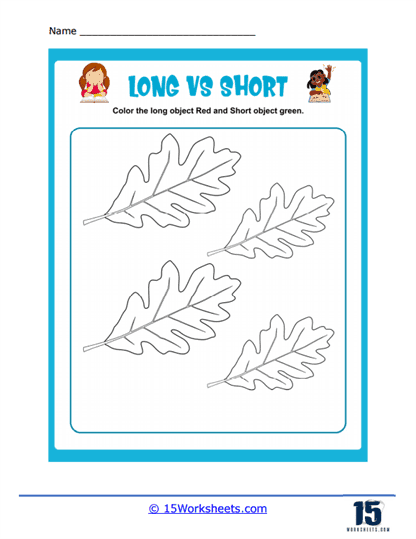Long vs. Short Worksheets
Teaching Kids the Difference Between Long and Short
Teaching kids the difference between long and short is an essential step in helping them understand basic measurement concepts. Here are some strategies to effectively teach the difference between long and short:
Introduce the Terms – Begin by explaining the meanings of “long” and “short.” Long refers to a greater length, while short refers to a lesser length. Use clear and simple language to ensure they understand these terms.
Use Visual Examples – Provide visual examples of objects that are clearly long and short. For instance, you can use a long pencil and a short pencil or a long ruler and a short ruler. Point out the differences in length and encourage children to observe and describe them.
Hands-on Activities – Engage children in hands-on activities that allow them to compare the length of different objects. For example, ask them to find objects around the room that are long and short, and have them place the items in two separate groups.
Sorting and Ordering – Encourage children to sort or order objects based on their length. Provide a set of objects with varying lengths and ask them to arrange the items from shortest to longest, or vice versa.
Draw and Create – Have children draw or create objects of different lengths using art materials such as paper, playdough, or pipe cleaners. This will help them visualize and internalize the concepts of long and short.
Use Real-life Examples – Reinforce the concepts of long and short by pointing out real-life examples, such as the length of a playground slide, the height of a building, or the length of a dog’s tail.
Storytime – Read stories or books that involve characters or objects with different lengths. Discuss the concepts of long and short within the context of the story to help children understand and remember the terms.
Games and Challenges – Organize games or challenges that involve identifying and comparing long and short objects. For example, play “I Spy” with a focus on finding long or short items or set up a scavenger hunt with clues related to length.
Use Songs and Rhymes – Teach children songs or rhymes that incorporate the concepts of long and short. This can help make learning more fun and memorable.
Reinforce Concepts Regularly – Provide regular opportunities for children to practice identifying and comparing long and short objects. This will help them internalize the concepts and become more comfortable with them.
Remember to be patient and provide positive reinforcement as children learn the difference between long and short. With consistent practice and exposure to these concepts, they will develop a solid understanding of basic measurement principles.

